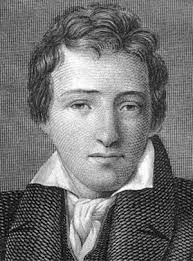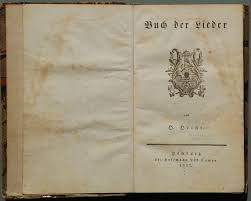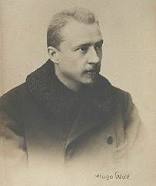
Heinrich Heine
Music played an important role in the life of Heinrich Heine. He did more than just write brilliant reviews of music and operas. For Heine, music was a great vital force that occupied an important place in the content sphere of his poems. And unsurprisingly, his poems were favorites with composers far and wide. In fact, his poetry has been set to music over 10,000 times! Heine’s preference for the “lyric poem,” settings that express deep personal emotions and feelings in love poems and poems of love’s grief easily combined with the musical potential available to the music of the 19th century. Composers responded uniquely to Heine’s verse, and no two musical settings of the same poem are the same. So let’s compare and get started with one of Heine’s most beloved verses, “Du bist wie eine Blume,” (You are so like a Flower) in the musical hands of Robert Schumann.
You are so like a flower,
So lovely, fair and pure;
I gaze at you and wistful
Melancholy slips into my heart.
It’s as though I ought to lay
My hands upon your head
And pray God to ever keep you
So pure, fair, and lovely.
Robert Schumann: Myrthen, Op. 25, “Du bist wie eine Blume”

Heine’s Book of Songs
For Schumann, the Lied becomes a highly personal and confessional musical expression that epitomizes the autobiographical character of Romantic Art. And his use of flowery imagery has always been a metaphor for his fiancée, Clara Wieck. However, his setting is not sentimental at all, but the melancholic mood touches on the realistic. Almost defiantly, Schumann musically paints the decaying influence of the world on the maiden’s fairness and purity. Franz Liszt composed two versions of this Heine poem, and almost predictably focuses on the religious aspect of the verse. He creates almost angelic purity in his harmonies that gradually rise into the spiritual realm. Heine met Liszt in Paris in 1831, and for a couple of years they became good friends. The relationship eventually soured as Heine coined the term “Lisztomania,” mocking “the intense level of insanity and fan hysteria associated with Liszt.”
Franz Liszt: “Du bist wie eine Blume”

Hugo Wolf
In many respect, Gottfried Herrmann (1808-1878) was a visionary. Already in the early 1830’s he advocated the revival of Bach’s works and looked for authentic performances of the Viennese classics. Part of an extended Thuringia family, Herrmann was on friendly terms with Loewe, Spohr, Clara Wieck, Liszt, Robert Schumann, and eventually Johannes Brahms. Although Herrmann was not recognized as a composer during his lifetime, his music has great dramatic power and melodic invention. His first symphony had been considered equal to Schumann and Mendelssohn’s symphonies, but Herrmann primarily excelled in his settings of poetry. His Lieder are informed by a shared Romantic view of music, and the addition of the clarinet to his 1843 setting of the Heine verse reinforces the poetic sense of melancholy and inevitable loss.
Gottfried Herrmann: 6 Lieder, Op. 8, No. 3 “Du bist wie eine Blume”
So far, 415 settings of “Du bist wie eine Blume” have been identified. Its popularity among composers emerges from the simultaneous expression of worshipful love and satire. Heine mixes sentimentality with anti-sentimentality in the same poem creating his famous sense of Romantic irony. As Friedrich Nietzsche put it, “Heine possessed that divine malice without which I can’t imagine the perfect.” Hugo Wolf brought his own concentrated expressive intensity to bear on the Heine poem. He had the ability to distil the core of Heine’s poem and support it with his innate gift for lyrical melody, an attractive piano part and his subtle melodic construction.
Hugo Wolf: “Du bist wie eine Blume”




